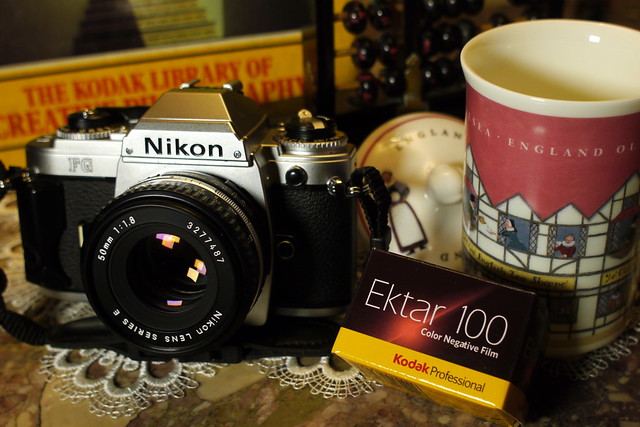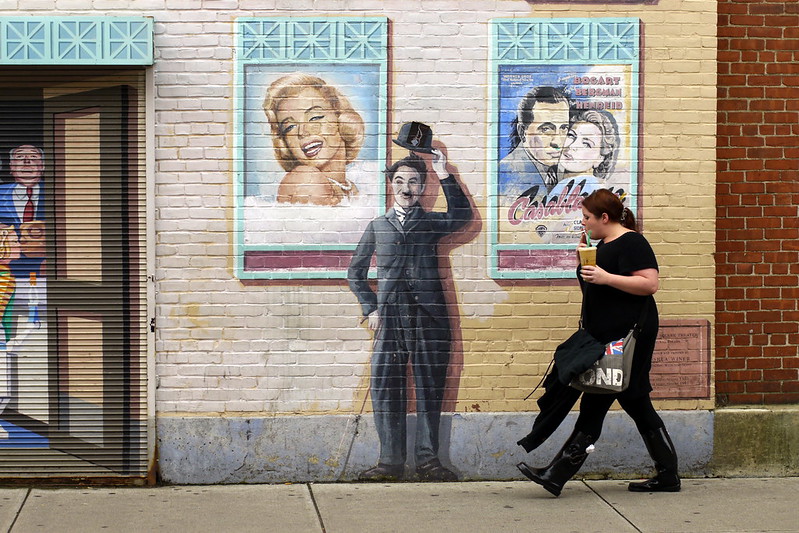In the book Looking at
Photographs 100 Pictures from the Collection of The Museum of Modern Art
(p.4), John Szarkowski remarked,
"When Daguerre
announced his great invention to the public in the summer of 1839, he explained
how it worked but not really what it was for.
The process was obviously a miracle of the age of science, and like many
miracle it was self-justifying. Painters
did say that it would be a great aid to art, and physicists said it would be a
great aid to science, but the important thing, on which every one agreed, was
that it was astonishing. Pictures of
exquisite perfection had been formed directly by the process of nature."
It seems safe to assume that the contest for supremacy
between film vs. digital is for the most part over. Chemical photography has
had an amazing run for almost 200 years and changed how we see the world
forever. However, digital has finally surpassed it. While I exclusively shoot digital,
once in a great while there comes temptation to return to nature and snap pictures
the old way.
The instrument of choice this time around was the compact
Nikon FG of 1980s vintage.
Not obvious
to many English readers, the word
camera
itself is Latin for room.
In this dark,
light-proof chamber the photo-sensitive material is kept, ready to be imprinted
by the force of nature.
A door at one
side of the room opens up to let in the precise amount of light to flood the
chemical plate.
Sometime in its long history the chemical plate was
replaced by a more portable (albeit highly flammable) nitrate film and later by
the safer acetate kind. The film used in
this session was the non-flammable Kodak Ektar 100.
Cameras of this vintage, including the Nikon FG, benefited
from the early days of electronic miniaturization. In addition to fully manual operation, the
Nikon FG has both Aperture Priority as well as Fully Automatic exposure
modes. Lenses from this era, including
the 50mm f/1.8 used here, are mostly all mechanical, manual focus type. Zoom is foot operated, leaving your hands to do other functions.
Despite being from 30 years back, the Nikon FG feels very
comfortable and totally up to date. Manual
focusing, aided by a split-image spot, is quick and accurate. The shutter sound
accompanied by the requisite mirror flapping is to die for.
Focusing tips from the Nikon FG manual
Unlike digital technology, with which you can shoot hundreds of photos into a
memory card, the Kodak Ektar 100 comes in a roll containing 36
exposures.
In this photo session, I made
the mistake of carrying only one roll of film and was caught wanting.
There were two forces that colluded to hasten
me to use up the precious frames.
The first was
my trigger happy digital finger, and the second was the desire to go home with a fully
exposed roll so I could immediately develop it.
After all,
chimping is not possible when you shoot film.
I had no idea whether the camera's
electronics were giving me accurate exposure.
It was not until much later that afternoon that I got the result below.
Now I know that the electronics and optics of this 30 year
old instrument work properly.
Some positive impressions I got from this back-to-nature
session:
- The
Nikon FG is one sweet retro camera
- Shooting
film in bright day in a busy street feels comfortable and quite natural
- Shutter
click with mirror flapping is sweet and very satisfying
- No video button to distract you
- Costco
in my area still does C-41 processing.
Developing 36 film + Scanning to CD is under $5. Prints are extra. Scanned jpgs are 2.4MB (3087x2048
pixels). This compares favorably to Walgreens (0.9MB, 1800x1215 pixels)
Some challenges that I encountered:
- You
only have 36 (or 24) shots per roll, of which I had only brought one
- If you
just want to shoot a couple of photos, you can't have them until you finish
the entire roll
- When you are done with a roll, you need to go to a lab and have it developed. Inexpensive but more money than digital
- No
chimping. You have no idea whether
your shot was good
- No video button
- You choose your ISO when you buy the film
All in all, I am very happy with this out of the ordinary
session down memory lane.
I have a renewed
respect and appreciation for this piece of time-tested technology.
The Nikon FG is definitely a keeper. The complete set from this session
can be seen
here.
In time long past, Louis Daguerre introduced a way to harness nature to produce detailed images and the world has never been the same.






